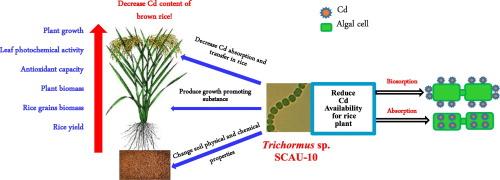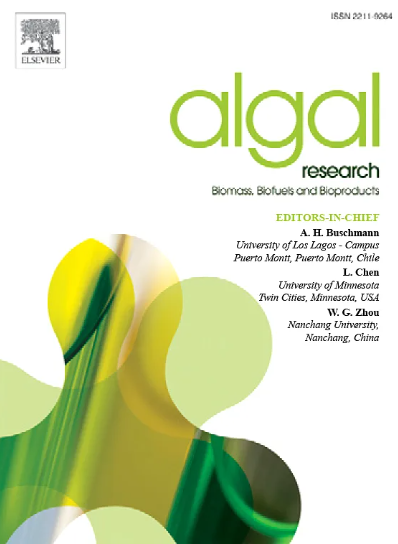Screening nitrogen-fixing cyanobacteria that can alleviate cadmium toxicity to rice and reduce cadmium accumulation in brown rice
Abstract
Among food crops, rice is the most serious food crop contaminated with cadmium (Cd). It is critical to reduce Cd bioavailability in the soil and prevent its accumulation in brown rice. The use of microorganisms to lessen Cd toxicity in rice has been the subject of numerous studies carried out in recent years. The nitrogen-fixing cyanobacterium (NFC) is a potent biofertilizer and heavy metal biosorbent. However, there is a dearth of research on the impact of NFC supplementation on rice's susceptibility to Cd poisoning. This study screened for Cd-tolerant NFCs and assessed how well they might promote growth and lower the amount of Cd in rice. Four NFCs with tolerance to 1 mg L−1 Cd were selected from ten NFCs. The results of seedling experiment showed that SCAU-10 treatment increased plant height and biomass while reducing Cd levels in seedlings by 62.0 %. The pot experiment also demonstrated that SCAU-10 was effective in lowering Cd content in brown rice by 85.3 %. Reducing the bioavailability of soil Cd, shielding rice roots, preventing Cd transfer from below to above ground, generating phytohormones, and enhancing the photochemical electron quantum yield of rice leaves are a few possible action mechanisms of the NFC. It indicates that Trichormus sp. SCAU-10 has a great deal of promise for use as a biofertilizer in the safe management of Cd-contaminated rice fields. This is the first report on using Trichormus sp. biofertilizer for relieving the toxicity of Cd to rice and reducing Cd accumulation in brown rice.


| 公司名称 | 产品信息 | 采购帮参考价格 |
|---|---|---|
| 上海源叶 |
dihydrozeatin (DHZ)
|
|
| 上海源叶 |
trans-zeatin-riboside (TZR)
|
|
| 上海源叶 |
indole-3-acetic acid (IAA)
|
|
| 上海源叶 |
3-indolebutyric acid (IBA)
|
|
| 上海源叶 |
ABA
|
 求助内容:
求助内容: 应助结果提醒方式:
应助结果提醒方式:


